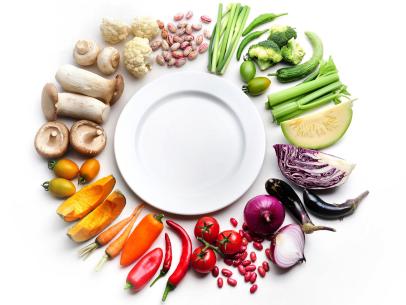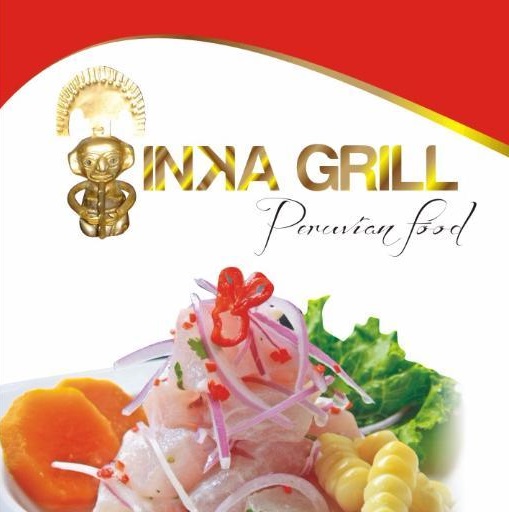Lifestyle
Here’s What ‘Clean Eating’ Really Means

TO ME, CLEAN EATING means that my kids cleared the table and did the dishes. To others, however, this term has a completely different definition. Not to be confused with “cleaning your plate,” the definition of clean eating is up for grabs since it has not yet been defined by any credible, governing body.
Kris Sollid, senior director of nutrition communications at the International Food Information Council, tells us that the confusion is amplified because “there is no standard definition for what clean means, and many consumers are left to determine its meaning for themselves.” He goes on to say, “American health authorities have not defined clean – not the U.S. Dietary Guidelines, not the Food and Drug Administration and not the Academy of Nutrition and Dietetics. And for good reason – because there’s no evidence to suggest that ‘eating clean’ or eating only foods with ‘clean labels’ is related to health. It’s a trend, not a tenet of validated scientific evidence.”
Yet the push for clean eating is often boosted through the impact that influencers on social media have on consumer values, even when the popularity of those influencers seems to be based more upon their degree of followers rather than the degrees they earned in school.
Let’s clean up some of the confusion and explore a few of these hot, yet misunderstood, terms.
Clean Eating 101
Clean Eating
“Eating that’s considered to be ‘clean’ is often conflated or used as a proxy for a term like ‘healthy,'” Sollid says. IFIC’s Food & Health Surveys have shown that products containing identical nutrition information are viewed differently, depending on other attributes that are attached to them. For example, products carrying identical nutrition labels are perceived to be “healthier” if they have a shorter ingredients list – compared to a longer one.
Historically, IFIC’s Survey found that consumers looked more often at Nutrition Facts than ingredient lists when making food purchasing decisions. But since 2016, they’ve seen this gap narrow, although the number of ingredients doesn’t appear to be as important as being able to recognize the ingredients listed on the package.
Although I applaud this approach for some foods – like almond butter that only contains almonds – it doesn’t always apply. My favorite bread, for example, contains more than 25 ingredients on its label – and its organic, has whole grains and offers a wealth of other nutrients of value. But it’s far from a short list.
As far as pronunciation goes, some ingredients are listed by their chemical name instead of a common name. The ascorbic acid that might sound scary is merely the chemical name for vitamin C, a nutrient you might otherwise welcome.
Free from is commonly used on the front of product labels to tell you what the food does not contain, but just because an ingredient, like gluten, is eliminated, that product isn’t necessarily healthy. For example, a food free from gluten could be laden with sugar, salt, additives and preservatives – not what you might consider to be clean. Moreover, unless you have a medical condition or gluten intolerance that prohibits you from eating it, gluten isn’t a harmful ingredient. So if you just bought some gluten-free doughnuts, imagining that they’re cleaner than their gluten-filled counterparts, you might be in for a surprise.
Minimally Processed
Clean eating is also believed to include foods that aren’t processed, but that’s a word that is wrought with confusion too. If you brought a carrot home from the farmer’s market and washed it, peeled it and steamed it, you processed it. Highly processed foods, on the other hand, could contain excessive amounts of calories, fat, sugar and sodium – and perhaps be void of value. If you’re trying to eat cleaner, choosing foods that are minimally processed is the way to go. Reading food labels can help you make better choices.
Minimally processed essentially refers to foods that have undergone some form of processing but remain fairly close to their whole food form. Examples include pre-washed and packaged fruits and vegetables, bagged salads, roasted and ground nuts and coffee beans. In fact, many people might still consider some of these minimally processed foods as whole foods.
How can you tell if a label is clean?
If you’ve followed food conversations over the past decade, then you’ve likely heard disparaging references toward packaged food ingredients – statements like “if you can’t pronounce it, don’t eat it” or “look for foods with five ingredients or less.”
While these mantras may be well intended, it’s unclear how much, if at all, they help the average consumer make more healthful food choices.
Sustainable, Local and Organic
Clean eating is often associated with organic foods, and skyrocketing sales of such foods, confirms that connection. Although a word like natural doesn’t have a definition, organic is clearly defined. Organic foods have been produced without the use of synthetic pesticides, herbicides, fungicides, or synthetic fertilizers, and cannot be genetically modified or radiated. Organic poultry, dairy, meat, and eggs are produced without the use of growth hormones or antibiotics, and are humanely raised and slaughtered.
On food labels, products that use the term USDA organic must meet the following guidelines:
- Products labeled as 100% organic must contain only organically produced ingredients (excluding water and salt).
- Products labeled “organic” must consist of at least 95% organically produced ingredients (excluding water and salt).
- 100% and 95% organic products must use the green circular seal often seen on packaged goods.
- Processed products that contain at least 70% organic ingredients can use the phrase “made with organic ingredients” and list up to three of the organic ingredients or food groups on the principal display panel.
- Products with less than 70% organic ingredients may only list those ingredients that are organic on the information panel.
But wearing an organic seal doesn’t automatically mean that the food is healthy. After all, organic candy is still candy, void of value, so food labels still rule when it comes to organic foods or otherwise.
A number of people believe that a sustainable food is one that’s labeled as locally-grown, sustainably-sourced and non-GMO (not bioengineered).
I guess that makes sense, except local itself is another misunderstood term that lacks definition. Are local foods those that are grown in your neighborhood, or in your state or in your country? The answer to that question is up to you.
Sharon Palmer, a dietitian nutritionist who’s known as the Plant-Powered Dietitian, confirms that “there is no official definition of local, but many people define it as grown within 100 miles. Others may define it by state, county or “bioregion”—a particular growing region based on defining characteristics, like watersheds, valleys.”
Palmer highlights that benefits of going local, include that you can reduce the number of miles it takes to get to you, so less fossil fuel is used. She does point out, however, that “they may not be grown in a more sustainable manner, as the production of berries in a heated greenhouse may not be more sustainable than berries grown farther away with no greenhouse.”
Transportation is just one factor in environmental sustainability. The way you produce food is also very significant: how you grow it, the inputs you use, how it’s processed.
“Buying foods from a CSA or farmers market is usually a sustainable action because these are typically whole foods with minimal packaging,” Palmer says. “If they come from your local region, they didn’t travel far to get to you, and if the farmer uses sustainable practices, such as crop rotations, bio diversity, composting, reduced fertilizers and pesticides, that can be better for the environment.”
Although you can’t assume that produce from farmer’s markets is organic, at least you could connect with farmers and ask questions about how your food is grown.
Sustainability can focus on reducing harm to the environment – people, animals and the planet – using our resources wisely, while also taking closer look at how we grow, process and package food.
But when it comes to how it actually plays out in the supermarket, sustainability may be more confusing to identify. To circumvent the “greenwashing on packages,” as Palmer puts it, where food companies try to give the perception of sustainability, when there isn’t much supporting those claims, Palmer suggests doing a little research on a food company to assess their sustainable practices. She encourages us when walking down the aisles of the store to look for foods that have less packaging, organic agriculture, whole ingredients and are more plant-based and nutrient-rich.
Plant-based
Most people have heard of plant-based, but an interpretation of what it means is up for grabs. Instagrammers promote plant-based eating as going vegan, yet it could just mean that plants are showing up as your main entree, and not just as the side dish. Even meat-eaters may be consuming more of a plant-based diet than they realize, especially since it’s easy to forget that foods like pasta, cereal, nuts and coffee (yes, coffee) are all plant-based.
As dietitian nutritionists, Palmer and I agree that it would be nice to see people embrace eating more whole plants, like pulses (lentils, beans, peas), whole grains (oats, sorghum, quinoa), a wide range of colorful vegetables and fruits, nuts and seeds (chia, hemp, sunflower).
Today, trendy meat alternatives are on fire, but plant-based burgers have been around for decades — they just didn’t look or taste like typical meat burgers. IFIC published a new survey on consumer perceptions and experiences with the emerging new food category of plant alternatives to animal meat that are designed to mimic the flavor and texture of meat. But if you’re assuming these burgers are wearing health halos, you’d better flip over that package to read the label and see what you’re really getting, as I write in my book, “Read It Before You Eat It: Taking You From Label To Table.”
-

 Local News2 weeks ago
Local News2 weeks agoHillsville locals awaken to scenes of devastation following a powerful storm
-

 Local News2 weeks ago
Local News2 weeks agoSalem Planning Commission votes yes for HopeTree rezoning
-

 Local News1 week ago
Local News1 week agoIn May, Roanoke Valley Comicon will return
-

 Local News2 weeks ago
Local News2 weeks ago15 Vietnam veterans leave on Honor Flight
-

 Local News2 weeks ago
Local News2 weeks agoThe new CTE center’s formal opening is celebrated by Roanoke City Schools
-

 Local News1 week ago
Local News1 week agoVeterans are welcomed back to their homes after their Honor Flight bus excursion
-

 Local News1 week ago
Local News1 week agoAs parents fight to keep two primary schools open, emotions are rising
-

 Local News5 days ago
Local News5 days agoThe presence of the Lynchburg Police Department in downtown will grow





Leave a Reply